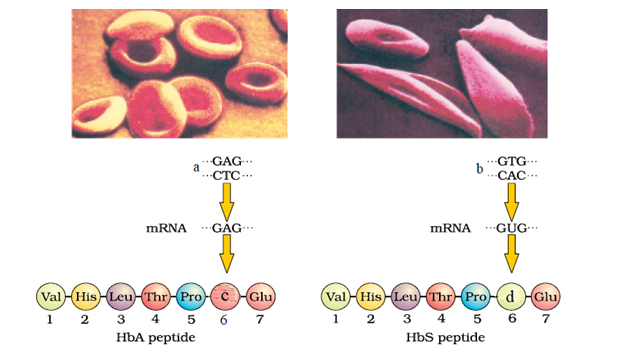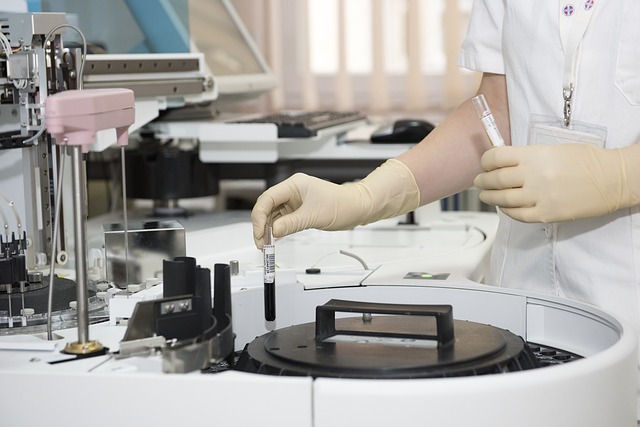Download Free Project on DNA Class 12 Biology
Project on DNA:
Introduction
DNA is the genetic material that makes up all living things. It is a long, double-stranded molecule that contains the instructions for building and maintaining an organism. DNA is passed down from parents to offspring, and it is responsible for determining an organism’s traits, such as its appearance, behavior, and susceptibility to disease.
Structure of DNA
DNA is made up of four chemical bases: adenine (A), guanine (G), cytosine (C), and thymine (T). These bases are arranged in a specific sequence along the DNA molecule. The sequence of bases determines the genetic information that is encoded in the DNA.
The DNA molecule is a double helix, which means that it is twisted like a spiral staircase. The two strands of the DNA molecule are held together by hydrogen bonds between the bases. The bases on one strand of the DNA molecule always pair up with the bases on the other strand in a specific way: A always pairs with T, and G always pairs with C.
Parts of a DNA Molecule
The basic unit of DNA is called a nucleotide. A nucleotide consists of a sugar molecule, a phosphate group, and a nitrogenous base. The sugar molecule is deoxyribose, the phosphate group is a molecule of phosphoric acid, and the nitrogenous bases are adenine, guanine, cytosine, and thymine.
The nucleotides are linked together by covalent bonds between the sugar molecule of one nucleotide and the phosphate group of the next nucleotide. This creates a long, chain-like molecule called a polynucleotide.
The two strands of the DNA molecule are held together by hydrogen bonds between the nitrogenous bases. The bases on one strand of the DNA molecule always pair up with the bases on the other strand in a specific way: A always pairs with T, and G always pairs with C.
Functions of DNA
The main function of DNA is to store genetic information. This information is used to build and maintain an organism’s cells, tissues, and organs. DNA also plays a role in cell division, reproduction, and protein synthesis.
DNA Replication (printed below)
When a cell divides, the DNA molecule must be copied so that each new cell has a complete set of genes. This process is called DNA replication. DNA replication is a very accurate process, and only a few errors occur each time the DNA is copied.
DNA Repair (printed below)
The DNA molecule is constantly exposed to damage from environmental factors, such as radiation and chemicals. DNA repair is the process by which damaged DNA is repaired. DNA repair is essential for maintaining the integrity of the genome and preventing genetic diseases.
Applications of DNA Technology
DNA technology has many applications in medicine, forensics, and biotechnology. Some of the most common applications of DNA technology include:
- Genetic testing: This is the use of DNA to diagnose genetic diseases or to determine the risk of developing a genetic disease.
- DNA fingerprinting: This is the use of DNA to identify individuals. DNA fingerprinting is used in forensic science to solve crimes and in paternity testing.
- Gene therapy: This is the use of DNA to treat genetic diseases. Gene therapy is still in its early stages of development, but it has the potential to cure many genetic diseases.
- Biotechnology: This is the use of living organisms to produce products or services. Biotechnology is used to produce food, medicine, and industrial products.
Future of DNA Technology
DNA technology is a rapidly developing field, and there are many new and exciting applications being developed all the time. Some of the potential future applications of DNA technology include:
- Personalized medicine: This is the use of DNA to tailor medical treatments to the individual patient.
- Gene editing: This is the process of changing the DNA sequence in a living organism. Gene editing has the potential to cure genetic diseases and create new organisms with desired traits.
- Synthetic biology: This is the process of designing and creating new biological systems. Synthetic biology has the potential to create new medicines, foods, and materials.
The future of DNA technology is full of possibilities, and it is likely to have a major impact on our lives in the years to come.
Additional Information
- The human genome contains about 3 billion base pairs of DNA.
- The average human cell contains about 6 feet of DNA.
- DNA is the most abundant molecule in the human body.
- DNA is a very stable molecule, and it can last for millions of years.
- DNA is the basis of life on Earth, and it is likely that all living things share a common ancestor.
DNA Replication: The Mechanism of Copying Genetic Information
DNA replication is a fundamental process in biology that ensures the accurate duplication of genetic information, allowing cells to divide and pass on their genetic material to their offspring. This intricate process occurs during the cell cycle’s synthesis (S) phase and is essential for maintaining genetic continuity and diversity.
Key Enzymes in DNA Replication:
1. DNA Helicase: Enzyme responsible for unwinding the double-stranded DNA molecule by breaking hydrogen bonds between base pairs.
2. DNA Primase: Enzyme that synthesizes a short RNA primer complementary to the DNA template, providing a starting point for DNA synthesis.
3. DNA Polymerase: Group of enzymes that catalyze the addition of complementary nucleotides to the growing DNA strand, reading the template strand in the 3′ to 5′ direction and synthesizing the new strand in the 5′ to 3′ direction.
4. DNA Ligase: Enzyme that seals the gaps between Okazaki fragments on the lagging strand by catalyzing the formation of phosphodiester bonds.
Steps of DNA Replication:
1. Initiation: DNA replication begins at specific sites called origins of replication. The DNA helicase unwinds the double helix at these origins, creating two replication forks. DNA primase generates RNA primers at the starting points of both leading and lagging strands.
2. Elongation on the Leading Strand:
- DNA polymerase III binds to the RNA primer and starts synthesizing the complementary leading strand in the 5′ to 3′ direction, utilizing the parental template strand as a guide.
- The leading strand is synthesized continuously towards the replication fork.
3. Elongation on the Lagging Strand:
- The lagging strand is synthesized discontinuously in short segments called Okazaki fragments. DNA primase generates RNA primers at intervals.
- DNA polymerase III then synthesizes the complementary fragments in the 5′ to 3′ direction away from the replication fork.
- DNA polymerase I replaces the RNA primers with DNA and joins adjacent Okazaki fragments.
- DNA ligase seals the gaps, forming a continuous lagging strand.
4. Termination: Replication continues bidirectionally until the replication forks meet at specific termination sequences. Here, DNA replication is completed, and the newly synthesized DNA strands are proofread and corrected for errors.
Accuracy and Proofreading:
DNA replication is remarkably accurate due to the proofreading ability of DNA polymerases. If an incorrect nucleotide is added, the enzyme’s 3′ to 5′ exonuclease activity removes the incorrect nucleotide before adding the correct one.
Significance of DNA Replication:
DNA replication ensures that each new cell receives an identical copy of genetic information. Errors in replication can lead to mutations, which may cause genetic disorders or contribute to evolutionary diversity.
Conclusion:
DNA replication is a complex and precise process that underpins the inheritance of genetic information. The fidelity of this process is crucial for the accurate transmission of genetic traits from one generation to the next. Understanding the mechanics of DNA replication is essential not only for academic purposes but also for applications in fields such as medicine, genetics, and biotechnology.
DNA repair is a collection of processes by which a cell identifies and corrects damage to the DNA molecules that encode its genome. DNA damage can be caused by a variety of factors, including environmental factors such as radiation and chemicals, as well as normal metabolic processes.
There are two main types of DNA repair:
- Direct reversal: This type of repair involves the direct reversal of the chemical reaction that caused the damage. For example, some enzymes can remove damaged bases from DNA and replace them with the correct bases.
- Excision repair: This type of repair involves the removal of the damaged DNA and its replacement with newly synthesized DNA. There are two main types of excision repair:
- Base excision repair: This type of repair removes a single damaged base from DNA.
- Nucleotide excision repair: This type of repair removes a longer segment of damaged DNA, including the damaged base and several bases on either side of it.
DNA repair is essential for maintaining the integrity of the genome and preventing genetic diseases. If DNA damage is not repaired, it can lead to mutations, which can cause cancer and other diseases.
Common types of DNA damage:
- Oxidative damage: This type of damage is caused by free radicals, which are unstable molecules that can react with DNA and damage it.
- Chemical damage: This type of damage is caused by exposure to chemicals, such as radiation and chemotherapy drugs.
- Physical damage: This type of damage is caused by exposure to heat, radiation, and other forms of energy.
DNA repair is a complex process, and there are many different proteins involved in it. The exact mechanisms of DNA repair vary depending on the type of damage. However, all DNA repair mechanisms involve the following steps:
- Detection of the damage: The cell must first detect the damage to the DNA. This is done by proteins called DNA damage sensors.
- Repair of the damage: Once the damage has been detected, it must be repaired. This is done by proteins called DNA repair enzymes.
- Validation of the repair: Once the damage has been repaired, it must be validated to make sure that it has been repaired correctly. This is done by proteins called DNA repair verification proteins.
DNA repair is a vital process that helps to protect the genome from damage. However, DNA repair is not always perfect, and some damage can escape repair. This can lead to mutations, which can cause cancer and other diseases.








